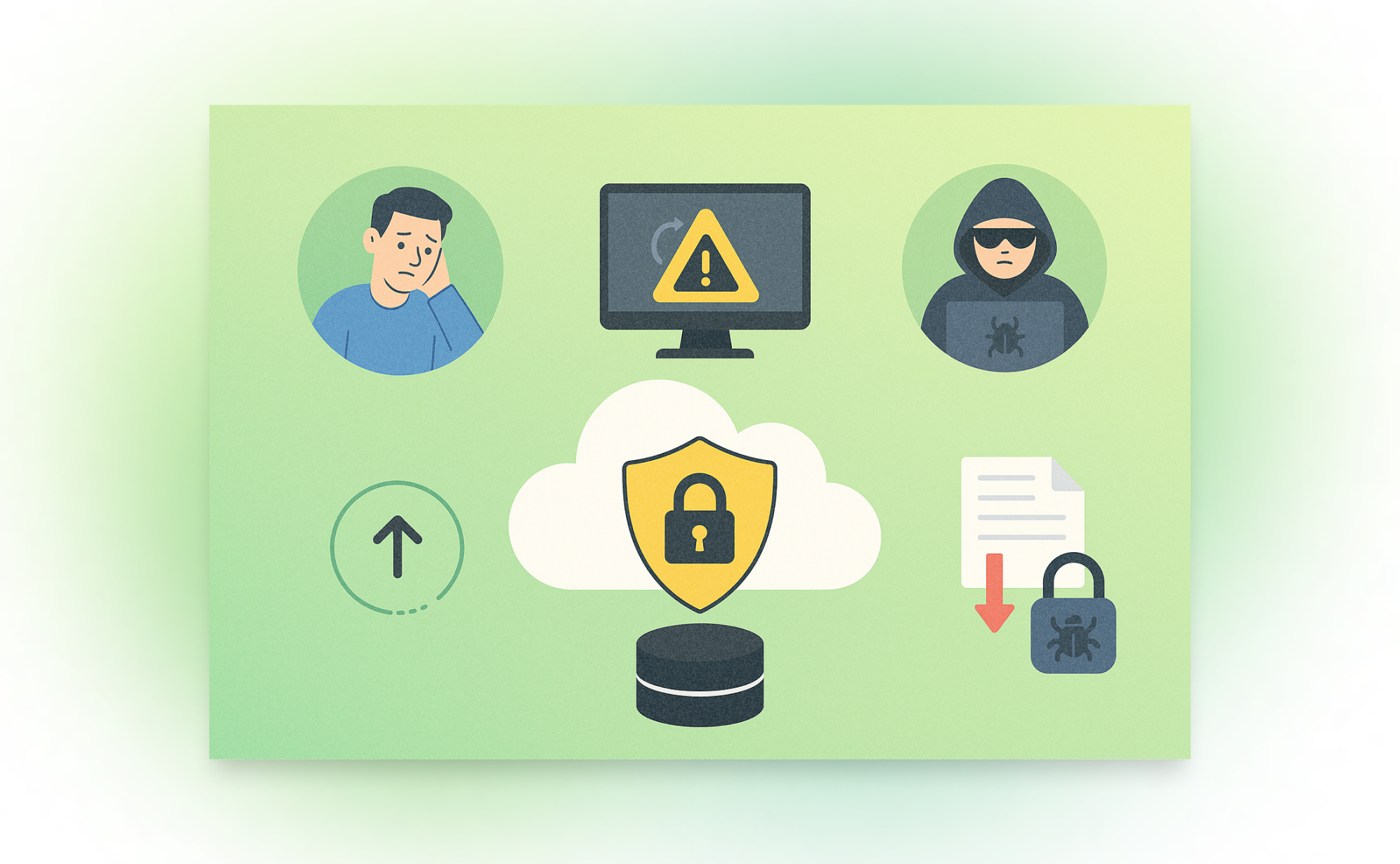While most SaaS (Software as a Service) providers have robust disaster recovery plans for their platforms, they don't typically take responsibility for data loss within your individual account. This means that if critical information is lost due to an issue on your end, you are ultimately responsible for its recovery.
Using SaaS applications to manage your work introduces certain risks, and losing key data can happen in several ways. Here are four major threats you should protect your team against.
1. Human Error
This is the number one reason for data loss. It's surprisingly easy for a team member to make a mistake that can set you back hours or even days. In many productivity apps, it only takes a few clicks to delete an entire project or board. A user might intend to delete a single task but accidentally have the whole table selected, or they might choose the "delete" option instead of "archive."
It's also common to need to roll back smaller mistakes, like accidentally changing a field configuration, removing a value from a selection field, or overwriting the wrong column with a data import. While some of these minor issues can be undone within the app itself, others require a dedicated backup and restore tool to revert the changes.
2. Malicious Users
Internal threats can be just as damaging as external ones. In many companies, authorization controls can be relaxed, allowing most team members to make significant updates or even delete crucial data. A disgruntled employee could intentionally delete entire projects or boards to harm the company.
There are also less severe but still problematic cases where lazy team members might delete data to lighten their workload, such as removing sales leads to avoid follow-ups or deleting tasks to hide a missed deadline. When work is managed in a shared online space, an independent backup ensures you have a true record of all activity.
3. Glitches & Down-time
Most major SaaS apps have a strong record for uptime, but no service is perfect. Even minor glitches, bugs from third-party integrations, or temporary down-time can significantly impact your business operations.
Imagine not being able to access prep work right before a client meeting or look up contract details during a call. An independent, third-party backup of your data ensures you have 24/7 access to your essential business information, even when the primary service is unavailable.
4. Faulty Data Imports & Third-Party Integrations
Integrating other applications or importing data from spreadsheets is a common way to streamline workflows, but these operations can be deceptively risky. A simple misstep, like a bad field mapping or importing a file with the wrong format, can instantly compromise your data's integrity.
5. Ransomware
Many people assume ransomware only targets large corporations, but in reality, hackers often go after smaller businesses, which may lack stringent security controls. By gaining access through a single employee's credentials, attackers can hold your data hostage and demand a hefty ransom. An effective backup strategy is your best defense, allowing you to restore your data and continue operations without paying the attackers.

.png)
